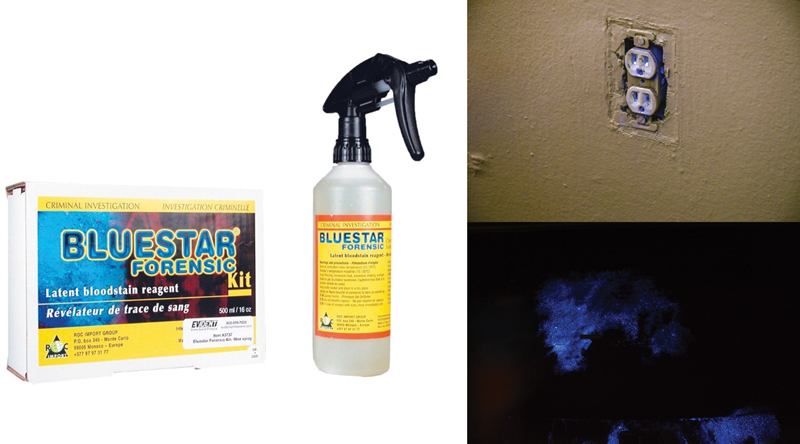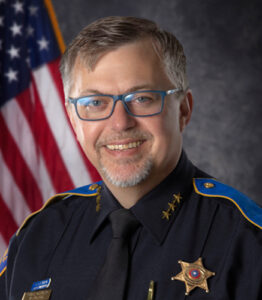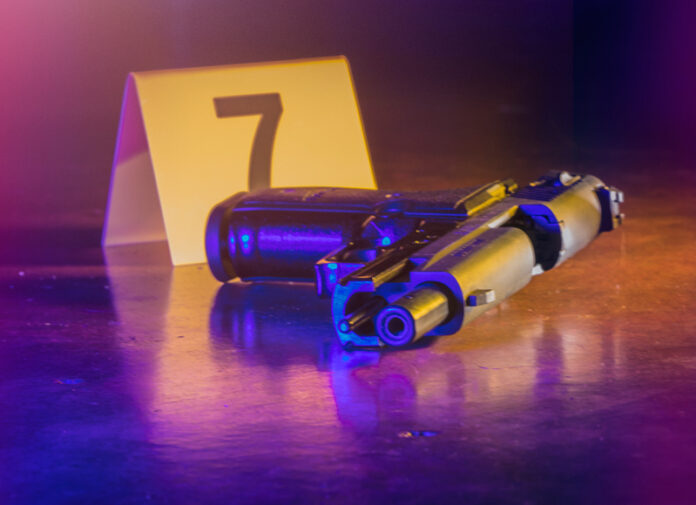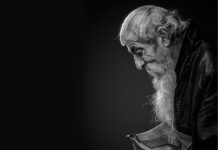Technique for Photographing Bloodstains
By Mike Fulton
Being a Forensic Photographer and Crime Scene Investigator necessitates a thorough understanding of the fundamental principles of forensics to accurately capture a scene using a camera. Often working unconventional hours and dealing with unfavorable lighting conditions, the stress and overall atmosphere can challenge even the most skilled photographer. A prime example of this is revisiting a murder scene at night, aiming to capture photographs of the blood trail using a chemical known as Bluestar Forensic latent bloodstain reagent.
Bluestar is a blood-visualizing chemical based on luminol that causes small amounts of blood to emit a bright blue glow. The process of photographing bloodstains at an outdoor crime scene requires specific equipment and sufficient personnel to capture the luminescent effect after applying the chemical. Simultaneously, the forensic photographer must adequately illuminate the scene for viewers of their images to fully grasp the composition of the crime scene.
Some of the basic items include:
- Digital SLR camera with a minimum of f/3.5 capability lens (faster the better)
- Sturdy Tripod but one not too heavy, remember this is a portable on the go style of photography
- Cable shutter release cable or remote (for extended shutter times required)
- One or more external flashes
- Bluestar Forensic latent bloodstain reagent, minimum of two bottles of prepared solution in spray bottles
- Enough personnel to operate camera, flashes, and spray bottles
When using a DSLR in low-light scenes, it is crucial to consider several factors to effectively utilize this technique. First, it is essential to adjust the camera settings to the widest aperture possible and switch the lens to manual focus mode. This prevents the camera from emitting light to autofocus, which can potentially ruin the image in near total darkness.
Secondly, employing a tripod and a cable shutter release or remote shutter release is necessary to eliminate any movement caused by hand-holding the camera or pressing the shutter for an extended period. In this example, the scene was situated in a dimly-lit residential area with no moonlight, these precautions were particularly important.
The required exposure time will depend on the amount of light present in the outdoor scene. Generally, a long exposure of up to 200 seconds or more may be required. Without the use of a tripod and cable release, camera movement can result in blurry images. Prior to initiating the exposure, it is advisable to illuminate the scene with a light source to ensure accurate focus.
In larger outdoor scenes, such as in the example of a crime scene, it is likely that external flashes will be needed to illuminate the area beyond the capabilities of a single flash. It is crucial to position the individuals operating the flashes out of the camera’s view. These flashes can be activated at any point during the exposure, but it is recommended to fire them either at the beginning or end to avoid illuminating personnel applying the Bluestar through spray bottles.

Finally, it is important for those spraying Bluestar to keep moving during the exposure for two reasons. One, to ensure continuous application of the chemical, making the luminescence visible throughout the exposure. Two, to prevent any ambient light from illuminating them during the long exposure. Moreover, multiple test exposures may be necessary to determine the appropriate number of flashes and the duration the shutter should remain open, depending on the lighting conditions at the specific scene.
Capturing the glow produced by Bluestar is a challenging skill for photographers to master, as it only lasts for a few seconds. Mistakes during the process can lead to the loss of crucial evidence. To aid in learning forensic photography technique without the risk of ruining real evidence, I developed a training solution using glow sticks. Surprisingly, glow sticks commonly used for birthday parties, outdoor activities, and holiday events have a similar blue glow to the reaction Bluestar has when it comes into contact with blood. Once the liquid inside the plastic container is removed and splattered onto various surfaces, the glow sticks can last for about 10 to 20 minutes.
 With over two decades of crime scene experience and hundreds of violent scenes processed, Mike Fulton, of Lake Jackson, Texas, will be teaching a course on Forensic Photography at the 2024 Texas School of Professional Photography. It will be a hands-on course for anyone who is curious about crime scene photography or anyone interested in pursuing a career in the forensic world. To learn more about Mike and his Texas School Course, see the write-up in this issue or go to TexasSchool.org.
With over two decades of crime scene experience and hundreds of violent scenes processed, Mike Fulton, of Lake Jackson, Texas, will be teaching a course on Forensic Photography at the 2024 Texas School of Professional Photography. It will be a hands-on course for anyone who is curious about crime scene photography or anyone interested in pursuing a career in the forensic world. To learn more about Mike and his Texas School Course, see the write-up in this issue or go to TexasSchool.org.











